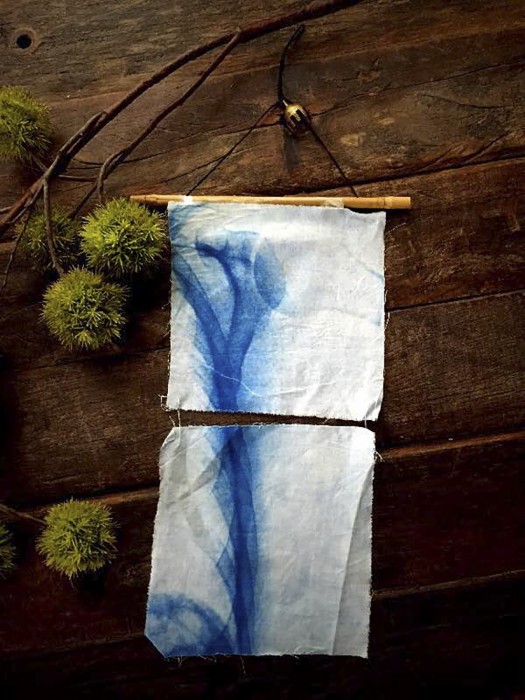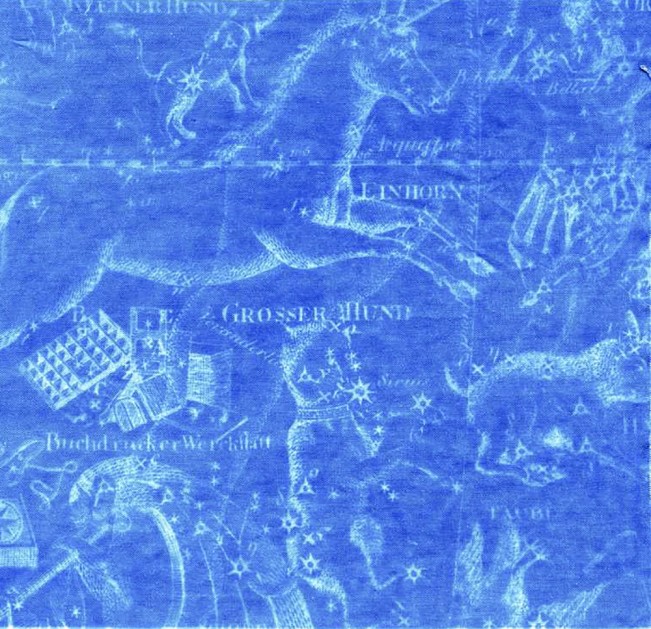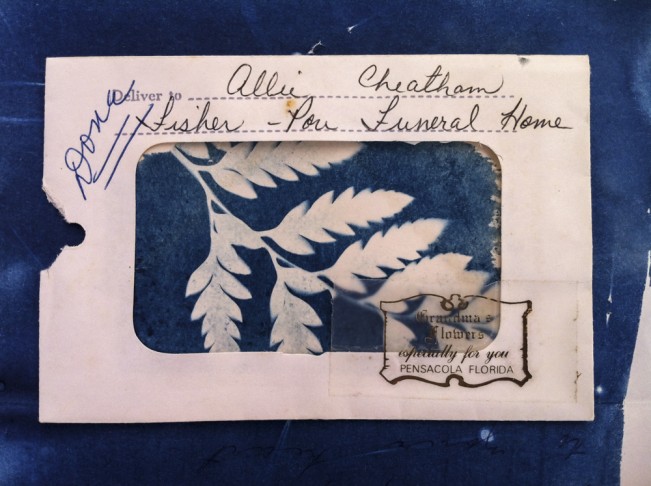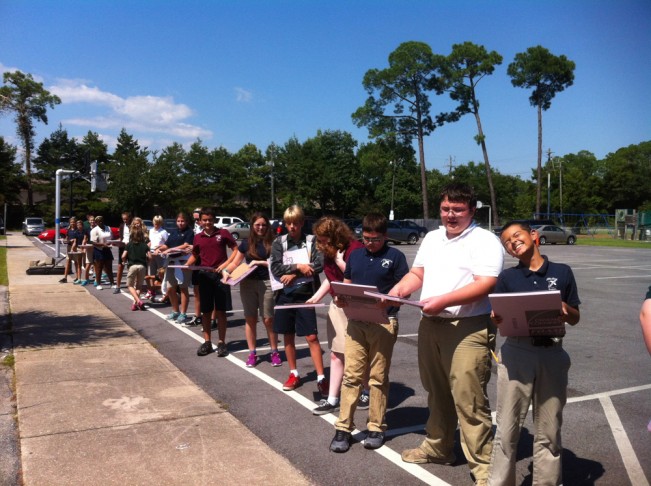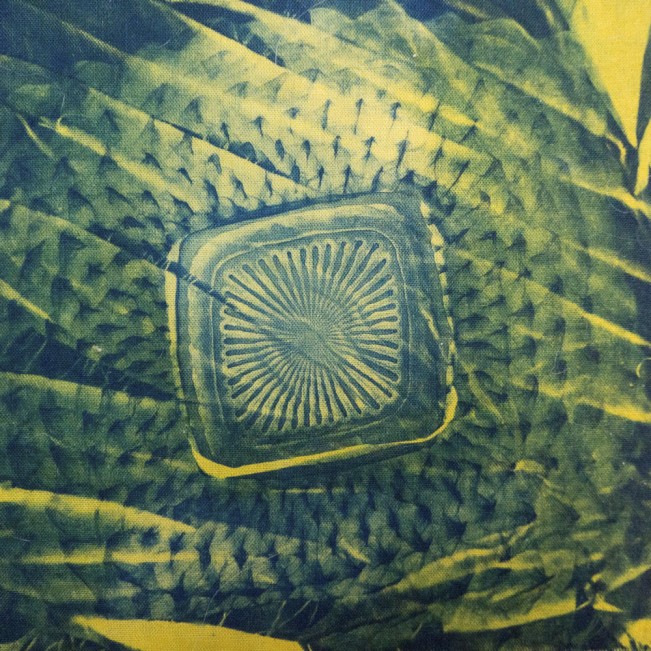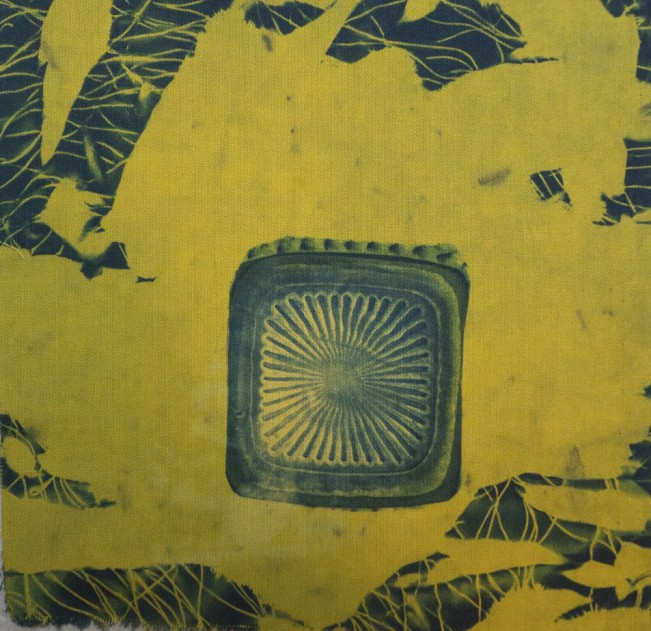September 19th 2015: The First World Cyanotype Day!
On September 19th, the first annual World Cyanotype Day will be celebrated, so gather your materials and join the fun! The organizers hope that you will take the month of September to produce a series of cyanotype flags to string across the world and then photograph and send the results to the website. The indefatigable rabble-rouser Judy Sherrod shares how it all came about and the details:
The whole thing got started one afternoon when we were just sitting around the big table drinking shootapaloozies (recipe to follow). We were all still under the influence of cyanotypes, having been taught how to make them by Laura Corley-Burlton the last time we were in Port Aransas. And someone asked, (I don’t remember who it was) “So when the hell is world-wide cyanotype day?” Someone else had an iPad and began googling, and she couldn’t find anything anywhere about world-wide cyanotype day… So we made it up, right then and there, registered worldcyanotypeday.com that afternoon, and adjourned.
My, oh my has it ever evolved. We have set an official date for World Cyanotype Day 2015. That’s September 19th, and we have picked a project, Cyanotype Prayer Flags. The traditional Tibetan prayer flag is a strand of sutras or stories. Some strands have hundreds of flags. Some have a few. That’s what got our attention and is the reason we decided to begin the project September 1 and continue throughout the month. The idea here is for people to make prayer flags all month long. At the end of September, we will assemble our prayer flags into strands and string them up somewhere.
Then, of course, comes the “selfie,” you and your installation, or maybe just a photo of the installation. And there are a couple of ways to show off your strand. If you are an Instagram photographer, post the photo of your installation there with the hashtag #WWCD2015 (please note that there are two Ws). You can also email the photo to our email address, shootapaloozie@gmail.com, and we’ll try to get it posted to our website. In either case, we’d like to know who you are, where you live, how many flags are in your strand, and its length.
We asked the people in the brand new Facebook group, World Cyanotype Day 2015, to get a head start so we could have some prayer flags to go with this article. That is what we are showing today.
But what is most important about the project is that it brings people together bonded by a common goal. We are working together on this thing. We are teaching each other. We are teaching our children, our students, our neighbors, our friends. That’s what it’s all about. We are working together.
Some of the upcoming events:
On September 12th, Amy Jasek will be teaching a cyanotype workshop in central Texas. https://www.facebook.com/events/414694398736507/
On September 19th, PhotoSynthesis in Manchester, CT is offering a one-day workshop/event.
Over on the other side of the pond, Moo Pa has organized a cyan-event also on the 19th. https://www.facebook.com/events/116905351992008/
And in Johnson City, Texas, population 1,400, we will be unfolding a very big piece of cloth, attempting to set a new record World’s Largest Cyanotype.
You are invited to join our Facebook group, World Cyanotype Day 2015.
You can help share the love by liking our facebook page.
And of course, there is that website, http://worldcyanotypeday.com.
In January 2016, the Worcester Art Museum will present the first major U.S. exhibition to trace the evolution of the cyanotype. Juxtaposing work by contemporary artists Christian Marclay, Annie Lopez, and Hugh Scott-Douglas with renowned photographers Anna Atkins, Henry Bose, and Arthur Wesley, Cyanotype: Photography’s Blue Period offers a sweeping survey of the medium from the 19th century through today. On view through April 24, 2016, the exhibition presents a comprehensive look at the cyanotype’s history, from its invention in 1842, to its mainstream appeal in the late 19th and early 20th centuries, to its resurgence as an experimental medium for contemporary artists.
The cyanotype, invented in 1842, is considered a “cameraless” method of photography. Images can be created on a variety of materials using only sunlight and clean water, with edition copies. This simple development process made it a favored photographic method among the general public in the late 19th and early 20th centuries, allowing them to document their daily lives, loved ones, and travels with ease. Artists also used the cyanotype as a means of developing proofs before producing a final work in gelatin and platinum, and in the 20th and 21st centuries as a manipulation tool, to create works of art ranging from the abstract to the surreal.
As promised — shootapaloozie recipe
You have to start with a double old-fashioned glass and a four-ounce jigger. Drop two jalapeno slices in the bottom of the glass. Add one jigger of Hornitos Reposado and one jigger of Patron Citronage. Fill with ice. Top with two good slices of lime. Cut with a Coronita, as necessary.
Posts on Lenscratch may not be reproduced without the permission of the Lenscratch staff and the photographer.
Recommended
-
Carolina Baldomá: An Elemental PracticeJanuary 5th, 2026
-
Time Travelers: Photographs from the Gayle Greenhill Collection at MOMADecember 28th, 2025
-
Suzette Dushi: Presences UnseenDecember 27th, 2025
-
Ragne Kristine Sigmond: Portraits of Painterly LightDecember 2nd, 2025





















